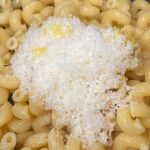Tracing the Evolution of Dog Lineages in North America
Recent research has shed light on how European dog breeds supplanted native North American lineages from 1492 onward. To clarify the timeline of this transition, scientists undertook sequencing of mitochondrial DNA extracted from dogs found at archaeological sites. The outcomes reveal an intricate social tapestry involving dogs during the initial stages of European colonization.
Unraveling Historical Dog Genetics
This investigation not only contributes to our comprehension of canine genetics but also enhances our understanding of human-dog relationships throughout history. By analyzing DNA sequences, researchers can piece together how different dog breeds interacted and evolved alongside early settlers and Indigenous populations.
A Multifaceted Heritage
The study highlights that the history of dogs in this era was far from straightforward, revealing a dynamic interaction between local and incoming breeds. Such complexities indicate that cultural exchanges and environmental factors significantly influenced these changes over centuries.
With increased interest in animal genetics today, contemporary parallels can be drawn to how human activities continue to shape dog breeds through breeding practices aimed at specific traits or purposes. Current statistics suggest that mixed-breed dogs now make up about 50% of pet ownership in America, underscoring the ongoing evolution influenced by societal preferences.
The Importance of Continued Research
Understanding these historical shifts is crucial for informing modern conservation efforts aimed at preserving genetic diversity within canine populations. Future studies promise to deepen insights into how colonialization shaped not only dog lineages but also broader ecological dynamics between humans and their animal companions.





